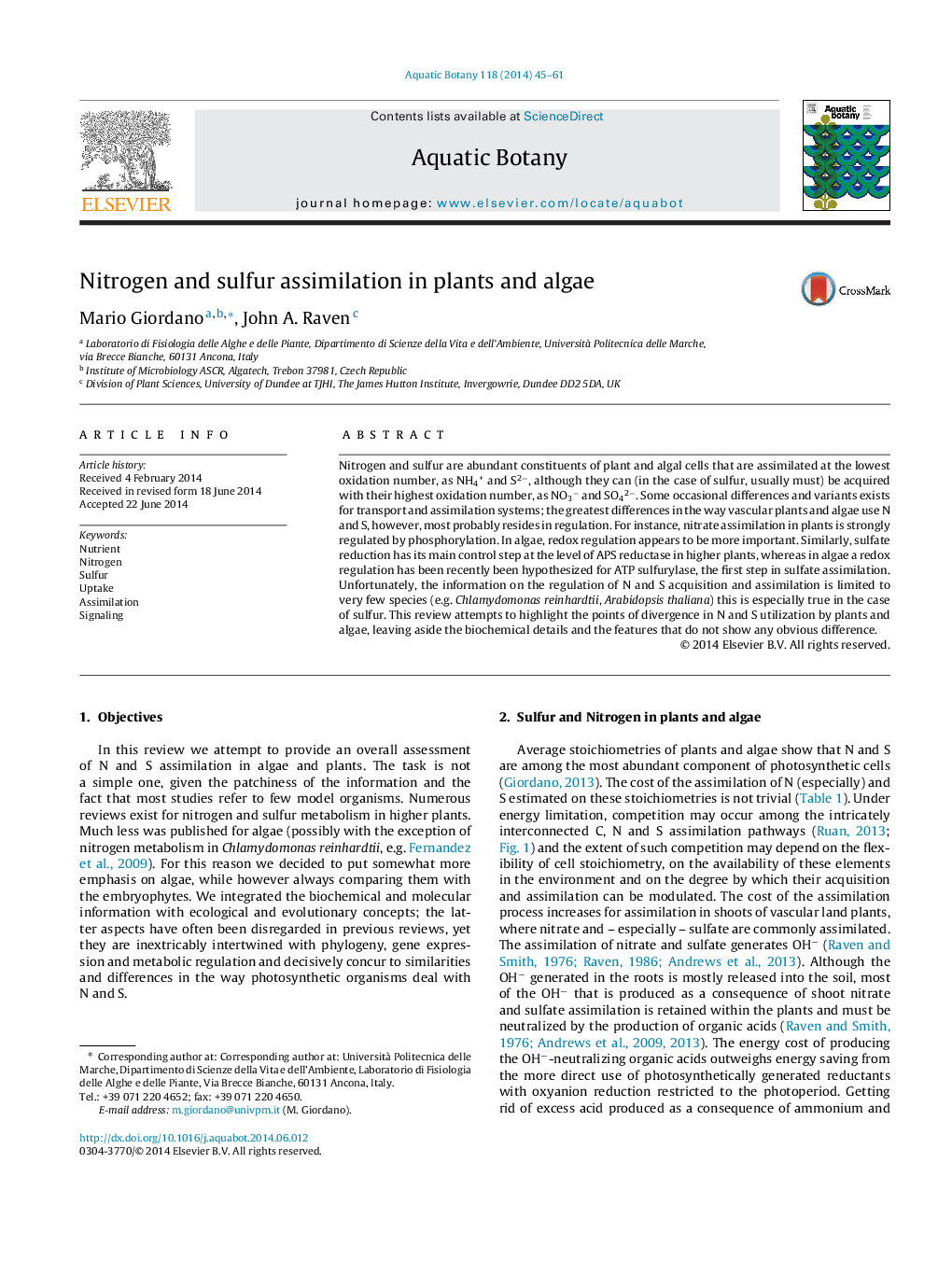| Article ID | Journal | Published Year | Pages | File Type |
|---|---|---|---|---|
| 4527821 | Aquatic Botany | 2014 | 17 Pages |
•Secular changes in N/S may have contributed to the radiation of algae/plants.•N/S assimilation is more directly under redox control in algae than in plants.•Knowledge of regulation comes from few organisms, especially for S.•Molecules such as NO, NO3−, S2− are important component of cells signalling systems.
Nitrogen and sulfur are abundant constituents of plant and algal cells that are assimilated at the lowest oxidation number, as NH4+ and S2−, although they can (in the case of sulfur, usually must) be acquired with their highest oxidation number, as NO3− and SO42−. Some occasional differences and variants exists for transport and assimilation systems; the greatest differences in the way vascular plants and algae use N and S, however, most probably resides in regulation. For instance, nitrate assimilation in plants is strongly regulated by phosphorylation. In algae, redox regulation appears to be more important. Similarly, sulfate reduction has its main control step at the level of APS reductase in higher plants, whereas in algae a redox regulation has been recently been hypothesized for ATP sulfurylase, the first step in sulfate assimilation. Unfortunately, the information on the regulation of N and S acquisition and assimilation is limited to very few species (e.g. Chlamydomonas reinhardtii, Arabidopsis thaliana) this is especially true in the case of sulfur. This review attempts to highlight the points of divergence in N and S utilization by plants and algae, leaving aside the biochemical details and the features that do not show any obvious difference.
